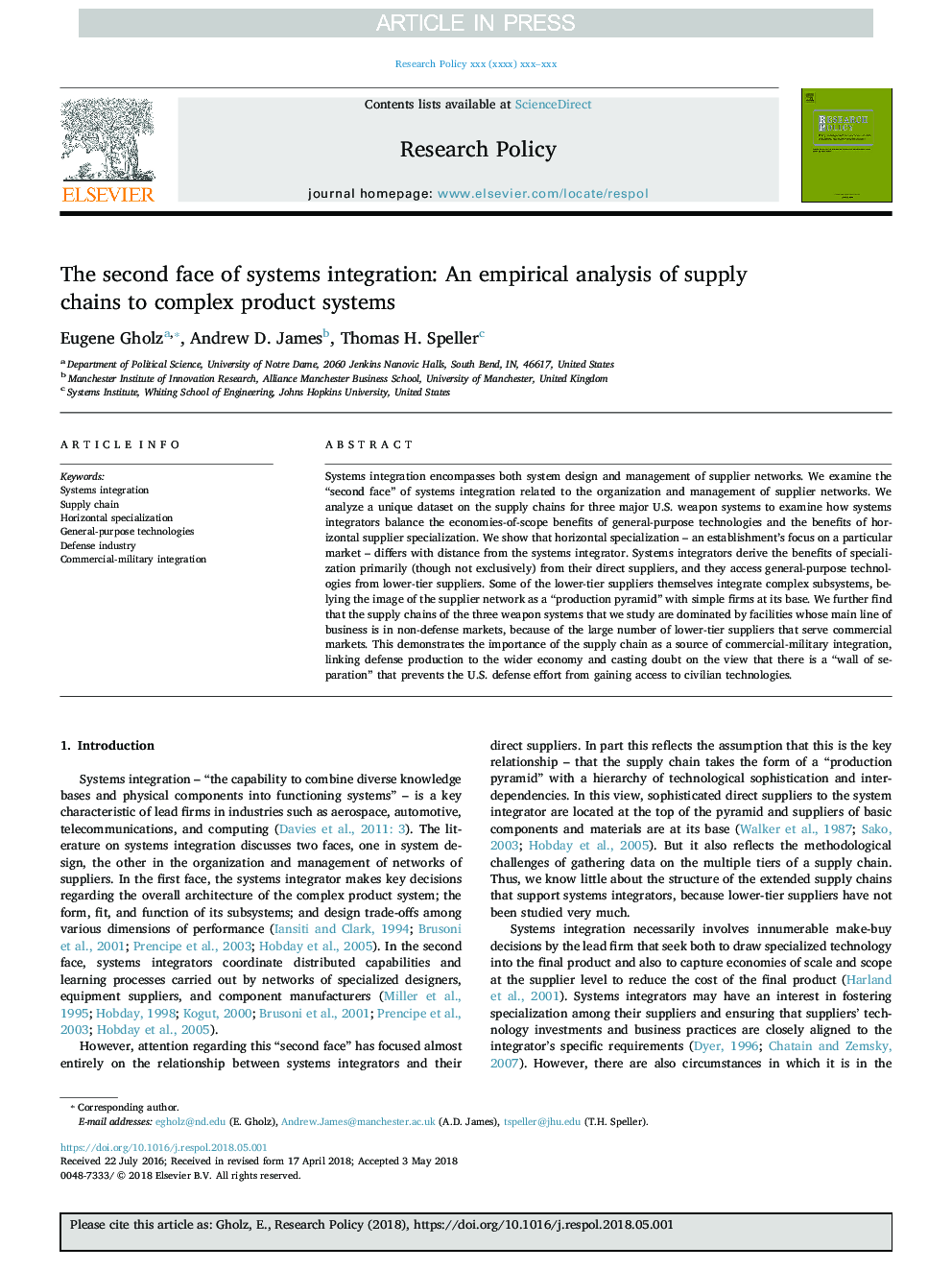| Article ID | Journal | Published Year | Pages | File Type |
|---|---|---|---|---|
| 7384282 | Research Policy | 2018 | 17 Pages |
Abstract
Systems integration encompasses both system design and management of supplier networks. We examine the “second face” of systems integration related to the organization and management of supplier networks. We analyze a unique dataset on the supply chains for three major U.S. weapon systems to examine how systems integrators balance the economies-of-scope benefits of general-purpose technologies and the benefits of horizontal supplier specialization. We show that horizontal specialization - an establishment's focus on a particular market - differs with distance from the systems integrator. Systems integrators derive the benefits of specialization primarily (though not exclusively) from their direct suppliers, and they access general-purpose technologies from lower-tier suppliers. Some of the lower-tier suppliers themselves integrate complex subsystems, belying the image of the supplier network as a “production pyramid” with simple firms at its base. We further find that the supply chains of the three weapon systems that we study are dominated by facilities whose main line of business is in non-defense markets, because of the large number of lower-tier suppliers that serve commercial markets. This demonstrates the importance of the supply chain as a source of commercial-military integration, linking defense production to the wider economy and casting doubt on the view that there is a “wall of separation” that prevents the U.S. defense effort from gaining access to civilian technologies.
Related Topics
Social Sciences and Humanities
Business, Management and Accounting
Business and International Management
Authors
Eugene Gholz, Andrew D. James, Thomas H. Speller,
